Imagine you have 48 hours in a city you’ve never visited before. Would you rather cram in as much as possible or enjoy a few things in a leisurely way? On Friday night, I arrived in Vienna with this question on my mind. My answer was to do both: rush on Saturday and relax on Sunday.
The existence of the Vienna Pass—an €80 QR code that grants you access to almost all attractions in the city—encourages haste. The economics only work if you dash around like a maniac. As I was travelling solo, and didn't know when or if I'd ever come back, I decided to take the tourist option.
Saturday: The Tourist
Despite not sleeping well on the rubbery mattress of the budget hotel, I took the U-bahn to Donaupark for the Parkrun. It was flat and a little boring but I love them, even when I know I'm going to be walking another 30,000 steps that day.
After the run, I made my way to the nearby Danube Tower. This was my first Vienna Pass activity. I thought it would give me perspective on the city but the view felt meaningless without having visited any of the places. I recognised nothing.
A friend told me that the Vienna public transport system was exceptional so I was happy to buy a 48-hour unlimited ticket. Shockingly, all the stations and trains were unmanned; it's an incredibly high-trust society. Though, as you'll discover, not always.
I got back on the U-bahn and emerged near The Albertina Museum, a swish combination of modern art and staterooms that look like they're from Trump Tower.
In such places, there is always going to be too much to see and I would much rather spend five minutes in front of one painting than 30 seconds in front of ten paintings. It was dismaying to see how many people just took a snapshot and then walked on.
Next, I visited the Leopold Museum, which hosted an exquisite show on the birth of modernism. The highlight was Klimt's Death and Life (see below), familiar to me from an old book cover, but no less devastating.
Vienna is neatly arranged so that most of the museums are in one part of the city. The Kunsthistorisches Museum (equivalent to the National Gallery) was my next stop and a mere 200 yards away. I forgot about my aching legs for a couple of hours and was transfixed by iconic paintings by Vermeer, Durer, Breughel, and Archimboldo. These are artists who not only impress on the canvas but whose work is so penetrating that it reveals the character of the people around you.
By this stage, I was depleted. I looked fruitlessly for the sightseeing bus but settled on getting a tram to the Belvedere. On checking the map, I saw I was going in the wrong direction. Never mind, I thought. I was too tired to get off and just gazed out the window at the Austrian parliament.
My fugue state was interrupted by a shabby woman who claimed to be a ticket inspector. No bother, I replied, digging out my 48-hour pass. She didn’t speak great English but I gathered that I should have validated my ticket in a machine. I explained that I had just arrived in Vienna and didn’t know this but she ordered me off the tram and demanded my ID.
I complied but couldn’t shake the feeling that I was being scammed. Was this really a ticket inspector? She didn’t look very official. I had visions of my driving license being stolen and the hideous charge I would have to pay.
“I don’t believe you're an inspector,” I said. “Let’s get the police.”
“Get the police if you want,” she scowled.
I imagined thugs arriving or a tedious Kafkaesque ordeal with the police. What a nightmare. So when she gave me back my driving license—and before she could say anything else or issue me with a fine—I walked away. I didn’t quite run but, pumped with adrenaline, I definitely trotted. She cried after me to stop but I kept walking. I zig-zagged down random streets, imagining her calling the police and reporting me for fine evasion. The Austrians are famously efficient and law-abiding. Even on deserted roads, I didn’t see any jaywalking. Had I made a terrible mistake?
With all the excitement, my legs were no longer sore. But what was going to happen to me? I found my way to Bergasse 19: the home of Sigmund Freud, the birthplace of psychoanalysis, and included in the Vienna Pass. I hid out there, feeling entirely guilt-ridden.
I didn't take much in, though loved that you have to ring the bell as if you were a patient. It was like a shrine and reminded me how much psychoanalysis operates like a religion.
At this stage, I was wondering if I should report myself to the police? I had just written about the case of Philippe Halsman, a man who was falsely imprisoned in Austria. Was the same going to happen to me? The only thing that stopped me from confessing was that I still hadn't got my money's worth from the Vienna Pass.
Getting on the right tram, my face shielded, I headed to the Belvedere Museum. This is another glorious collection in an impressive building. My highlight was seeing The Kiss. No reproduction can prepare you for how the gold glimmers. It was almost enough to make me forget my guilty conscience.
I retired to a pub, sampled the beers and gathered strength. I had one more touristy thing to do which was to go on the Prater Big Wheel made famous in Carol Reed’s The Third Man.
It was dark outside so the views made little sense but I was glad to be able to rest before heading back to the hotel with a takeaway to watch snooker on Eurosport. Thanks to the Vienna Pass I had saved €31.40, but the amount of rushing around really wasn't worth it.
Sunday: The Flâneur
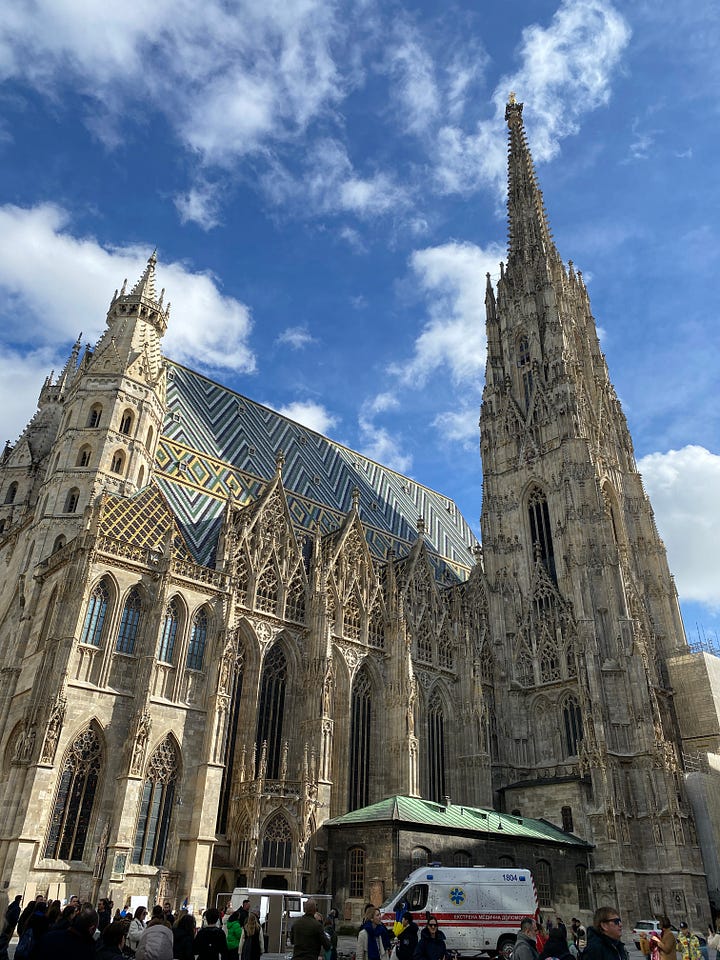
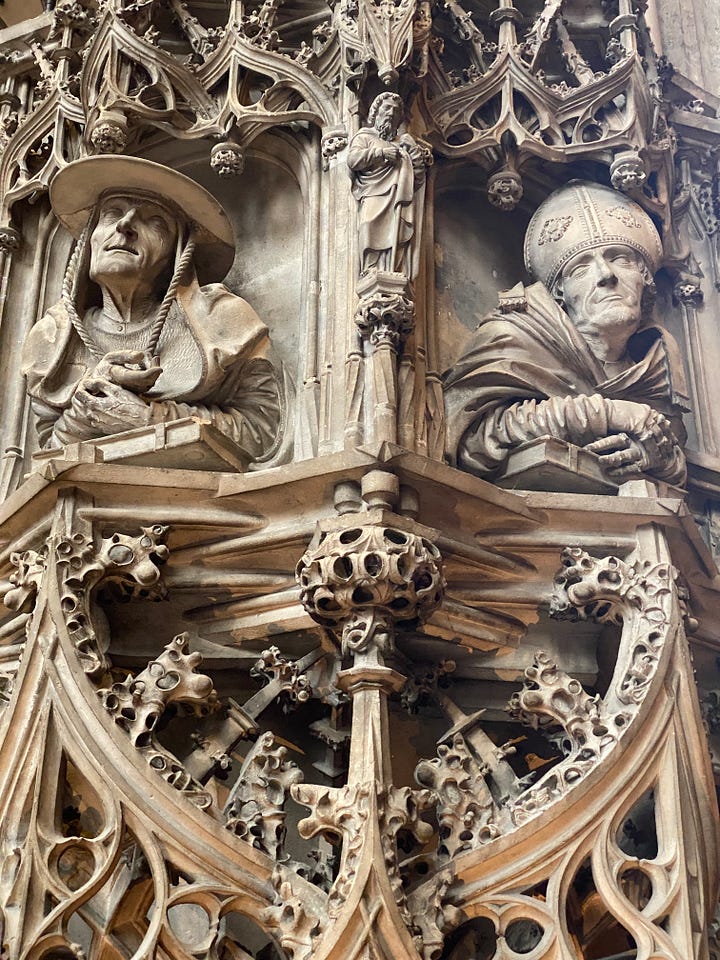
Whenever I am in a historic city, I try to attend a service in the big Cathedral. These buildings are some of the greatest achievements of Western civilization, constructed by anonymous craftsmen for a higher ideal. Church-going provides space for contemplation, repentance, and begging for forgiveness. It is also deeply nourishing to do nothing for an hour.
Free from the tyranny of the Vienna Pass, I enjoyed sauntering along the boulevards. The urgency had gone, and the world came alive in my eyes. I found myself near Joseph Maria Olbrich's Secession building, which features Klimt's Beethoven Frieze. They encouraged visitors to wear headphones that played Ode to Joy, providing 23 minutes of aesthetic bliss.
My original reason for coming to Central Europe was to visit my friend Antony who lives an hour away in Bratislava. He had bought us tickets to see Rapid Vienna play Austria Vienna, but we had some time to explore the city.
He showed me the Soviet War Memorial and I showed him Wittgenstein's House, another modernist classic that feels totally out of place in baroque Vienna.
We had a heavy lunch and a couple of beers then headed to the football. Thankfully, the mass of football fans made it unlikely there would be ticket inspectors, but I kept a nervous eye out for them.

The match itself was entertaining, with Rapid dominating in the first half. We were seated near the away fans who were boisterous throughout. It was a derby match after all.
The only worrying moment was when one of their flares set a purple bin liner on fire and looked like it was going to incinerate them all.
Later that evening, after Antony headed back to Slovakia, I wandered the streets without any plan or destination. I reflected on the life advice of novelist Matt Haig: "Sip, don't gulp." When I originally read this a few years ago I resisted the idea. I didn’t want to sip, I wanted to take a big swig; I wanted to suck dry the marrow of this world. Now, though, I can see the advantages of taking things slowly. The faster you go, the less you see.
Monday
Woke at 3.40am to get to the airport for the 6am flight back to Edinburgh. I made a nervous smile at passport control but was ushered through. Maybe it was a scam after all. I had escaped and resolved to be a flâneur who savours life rather than a tourist who mindlessly consumes. Oh, and I resolved to always validate my ticket.





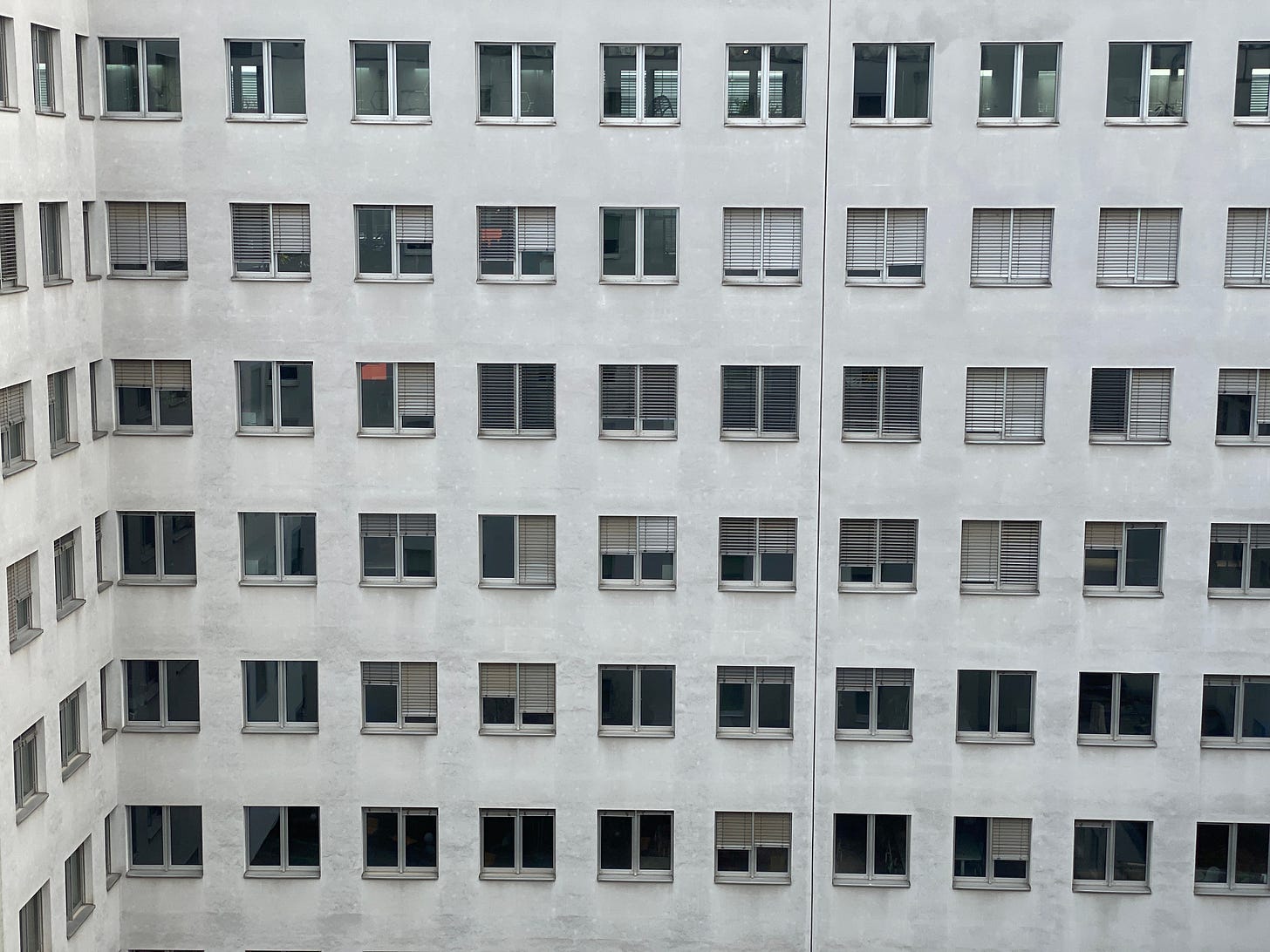
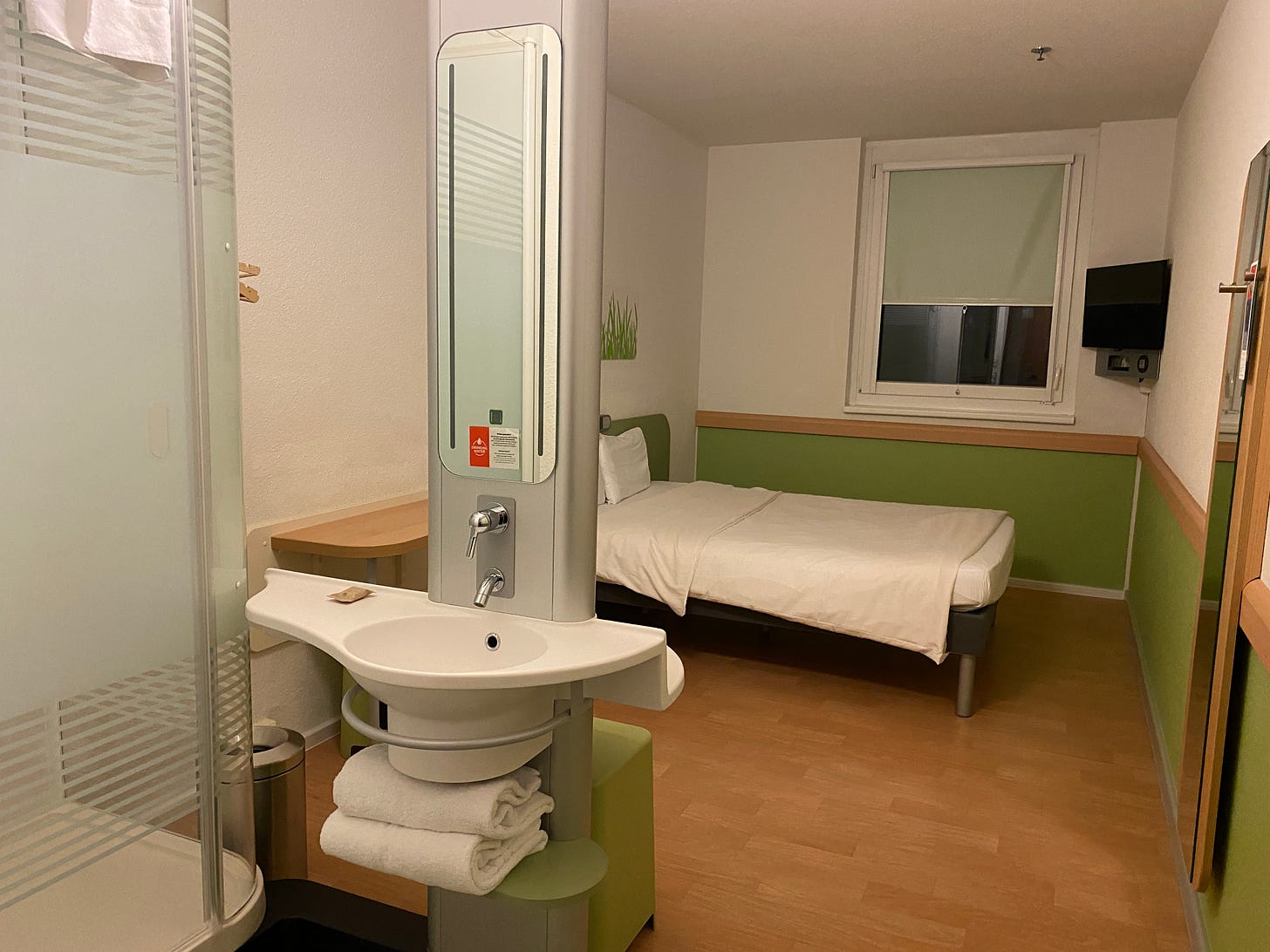

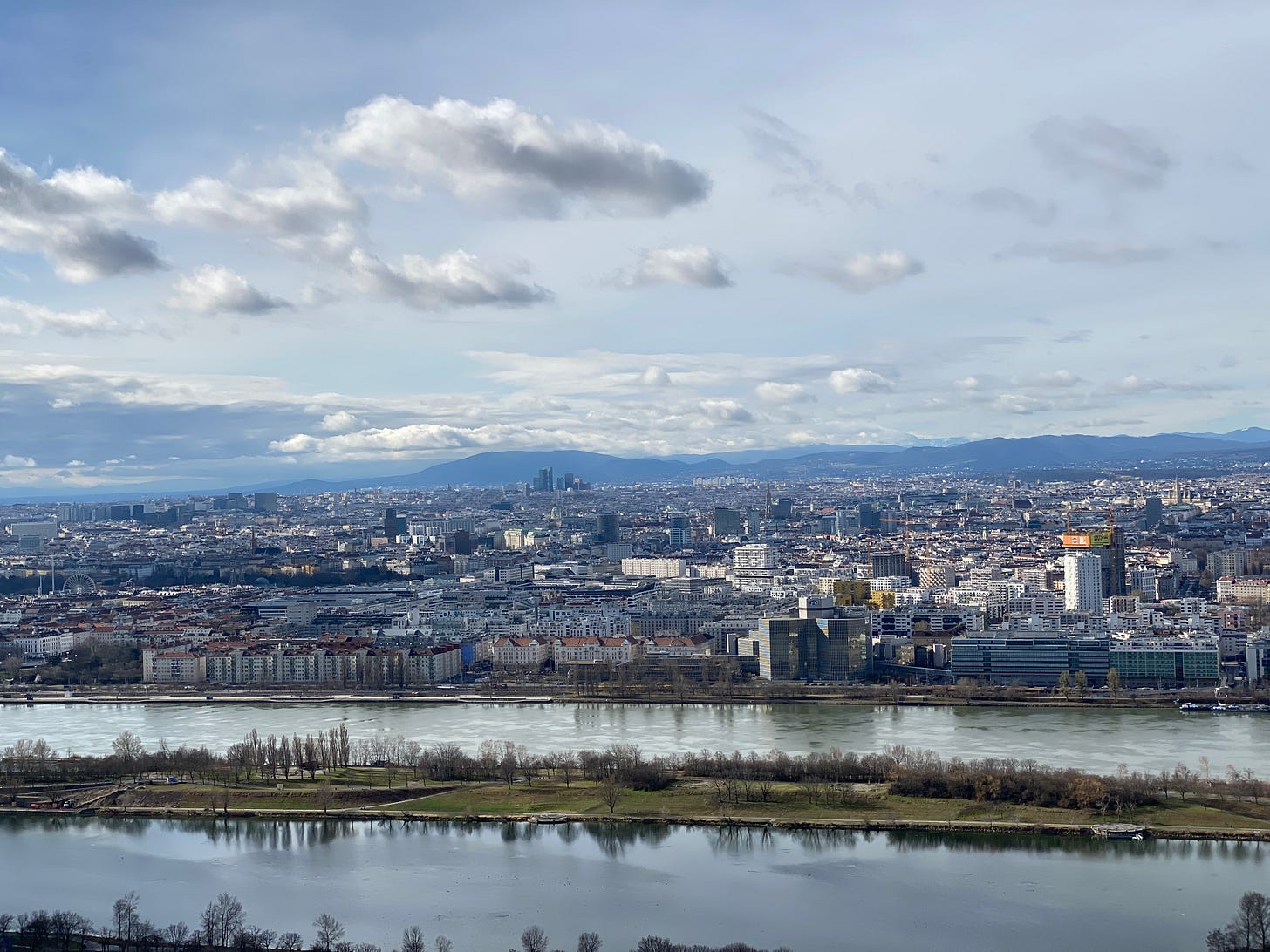
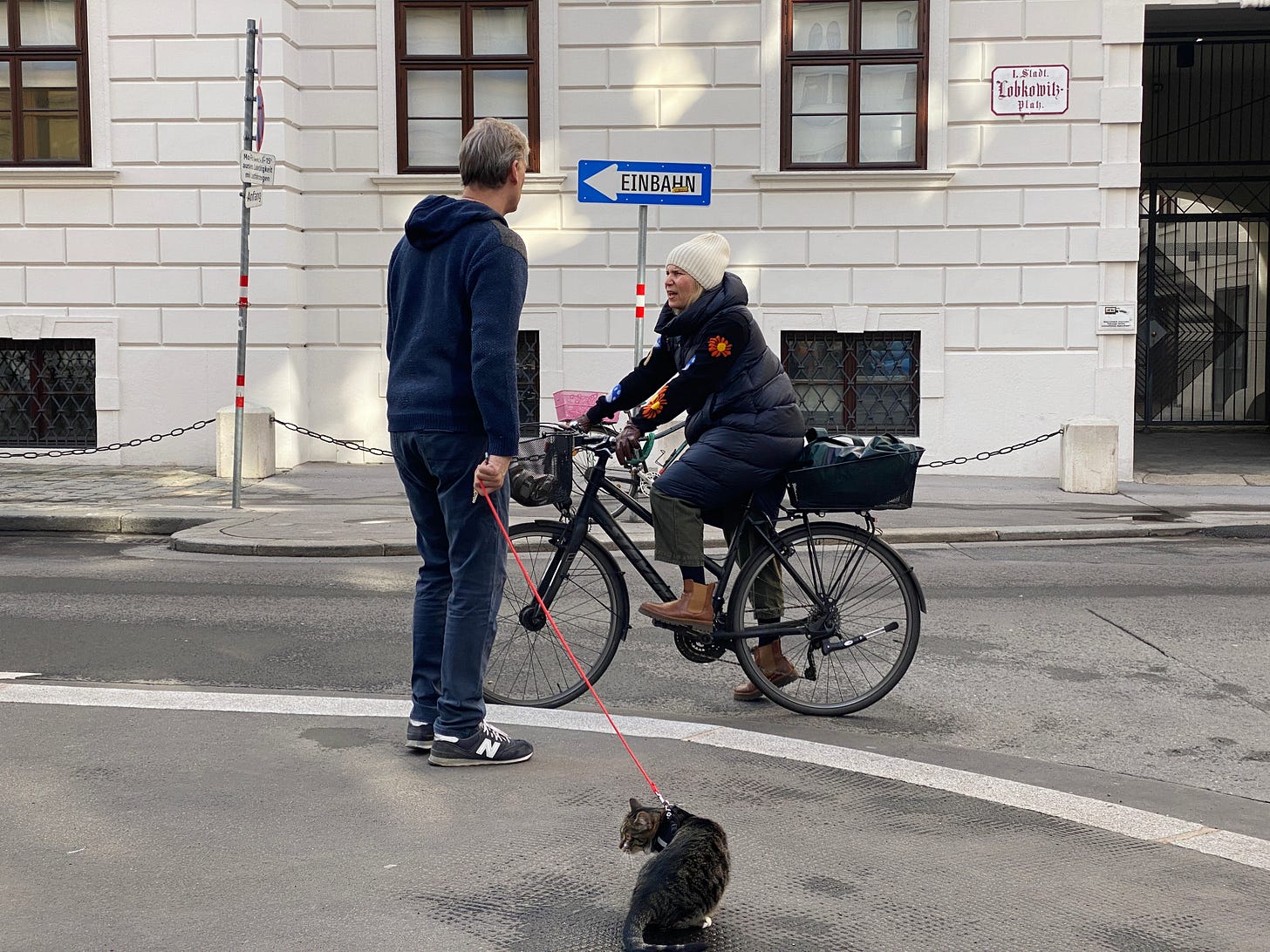


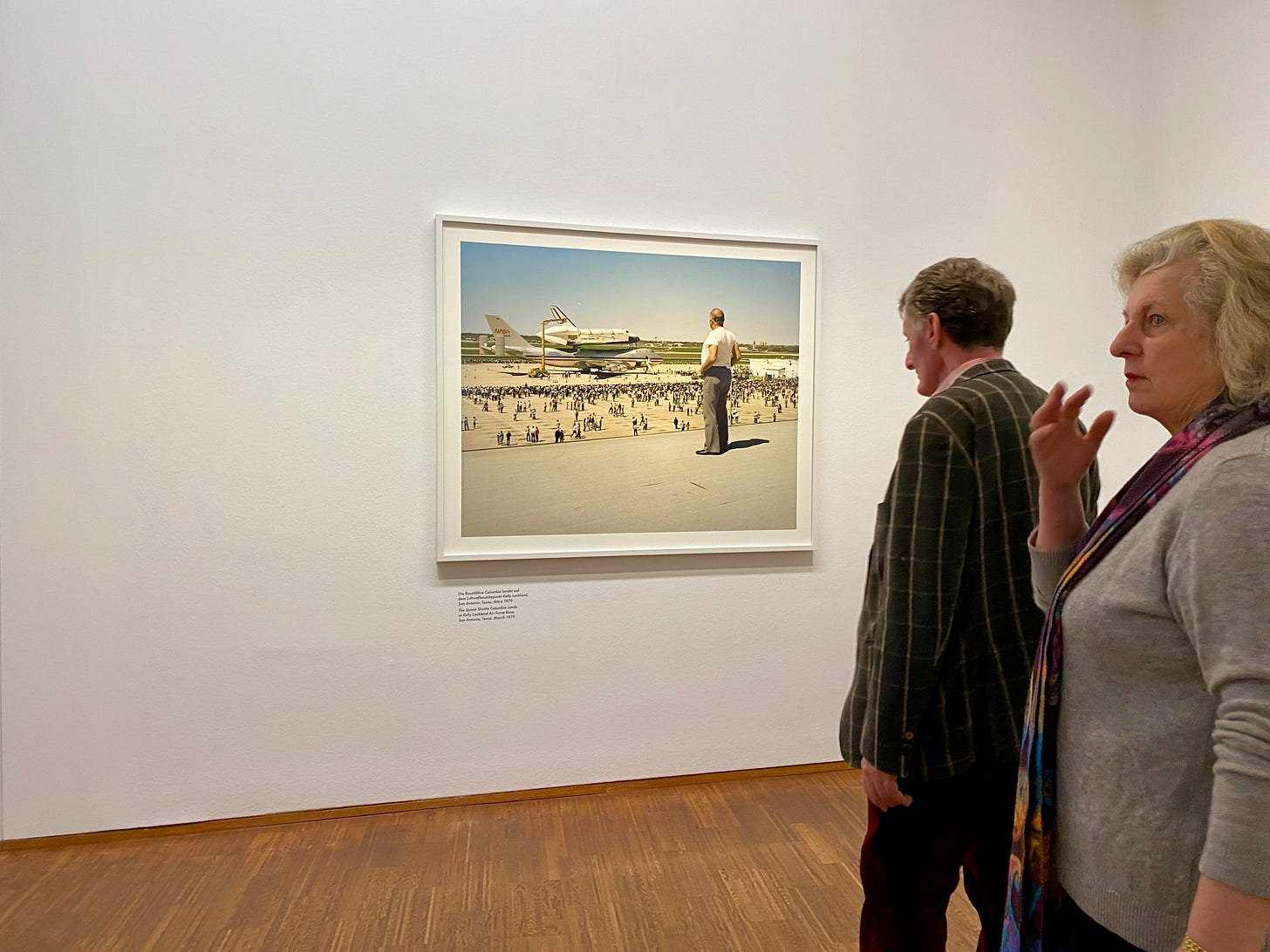
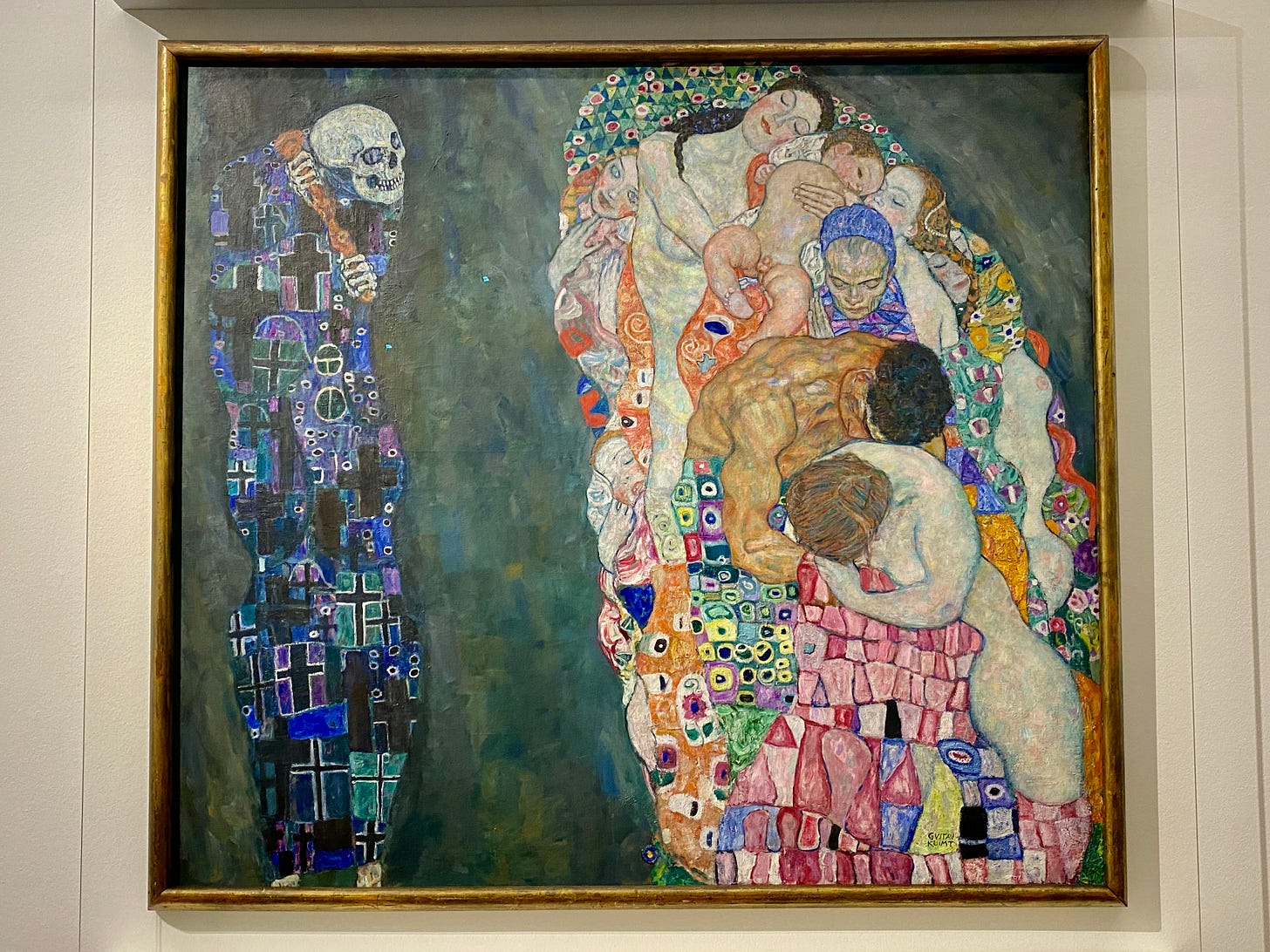
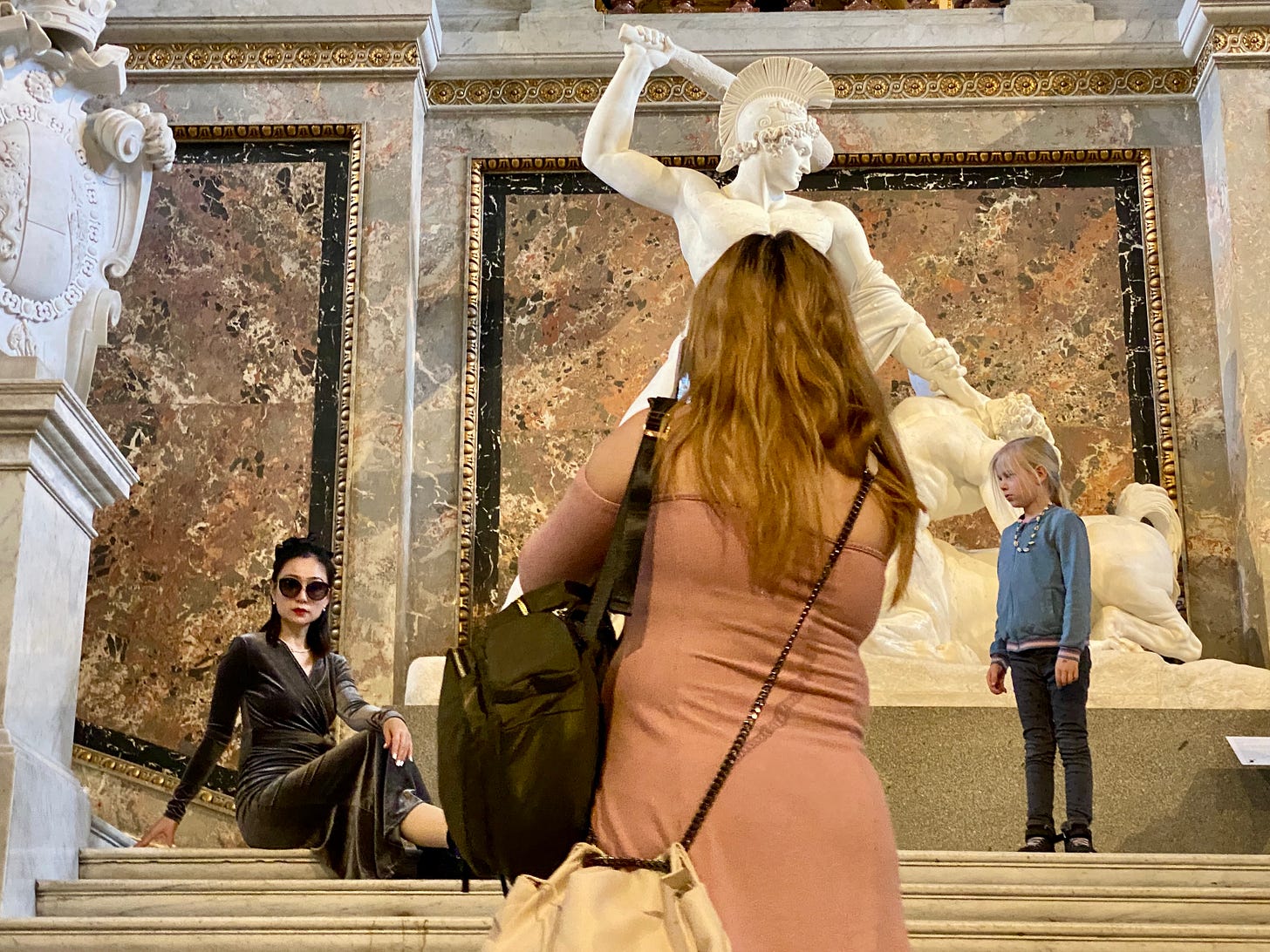


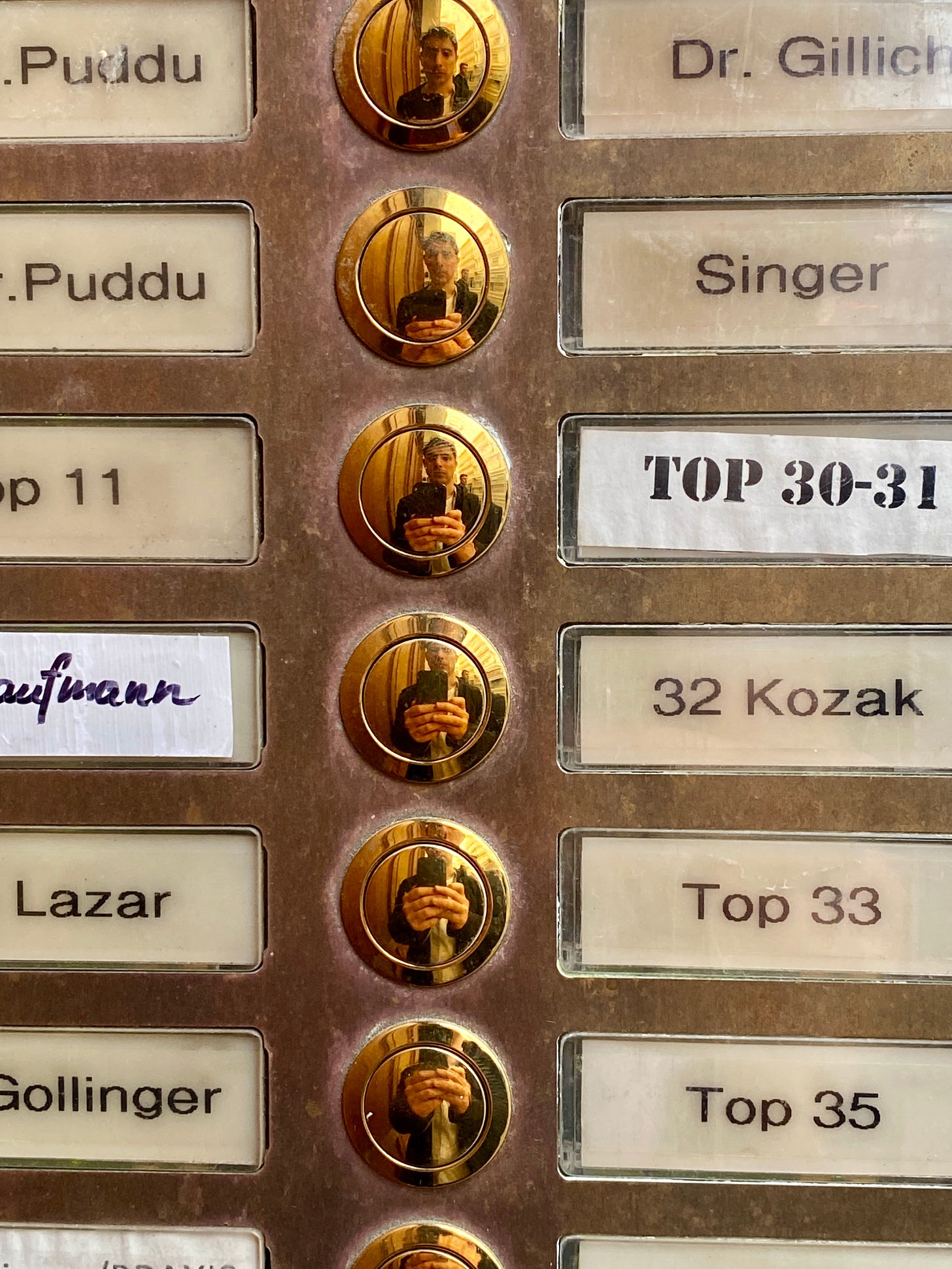

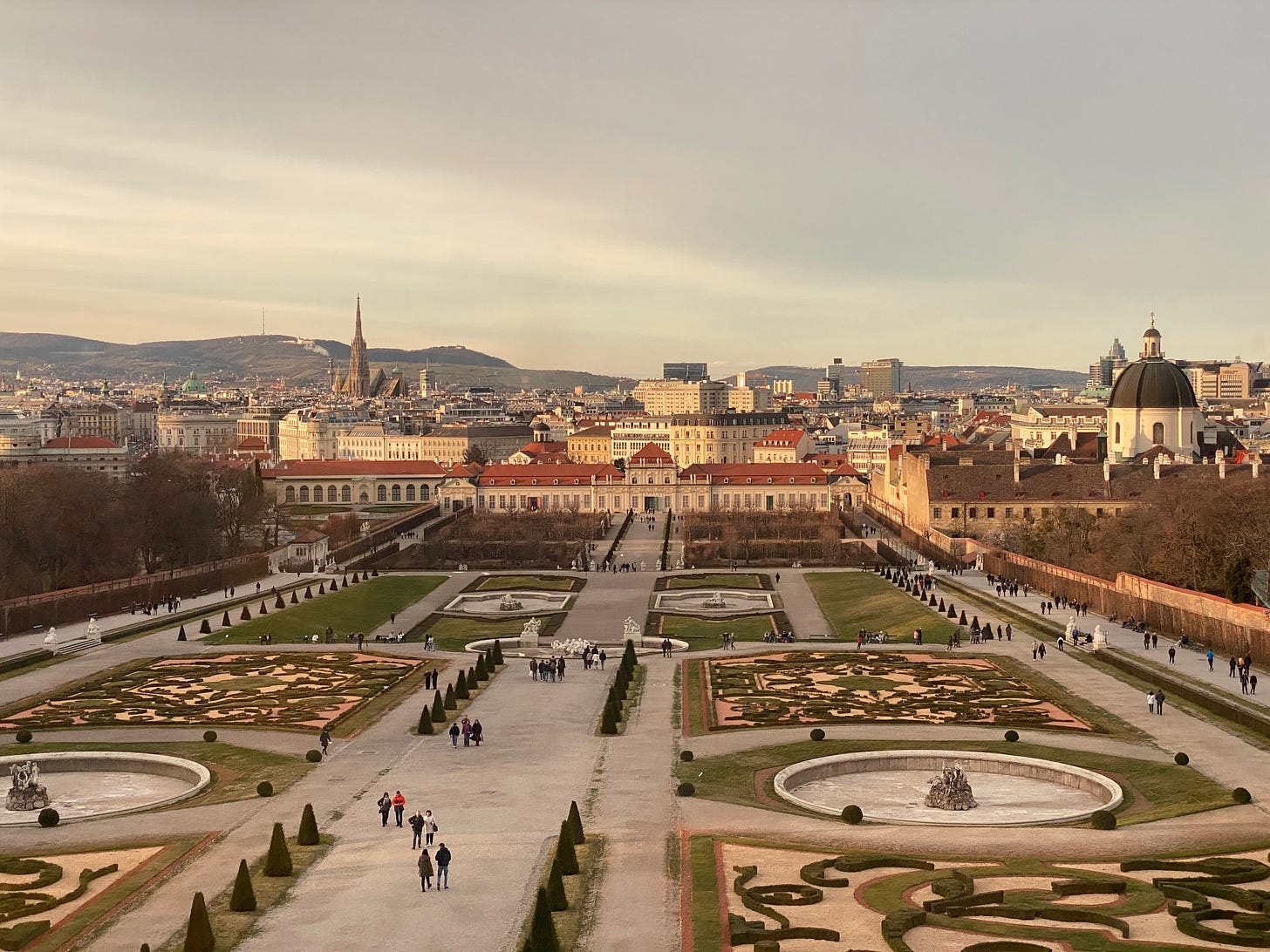
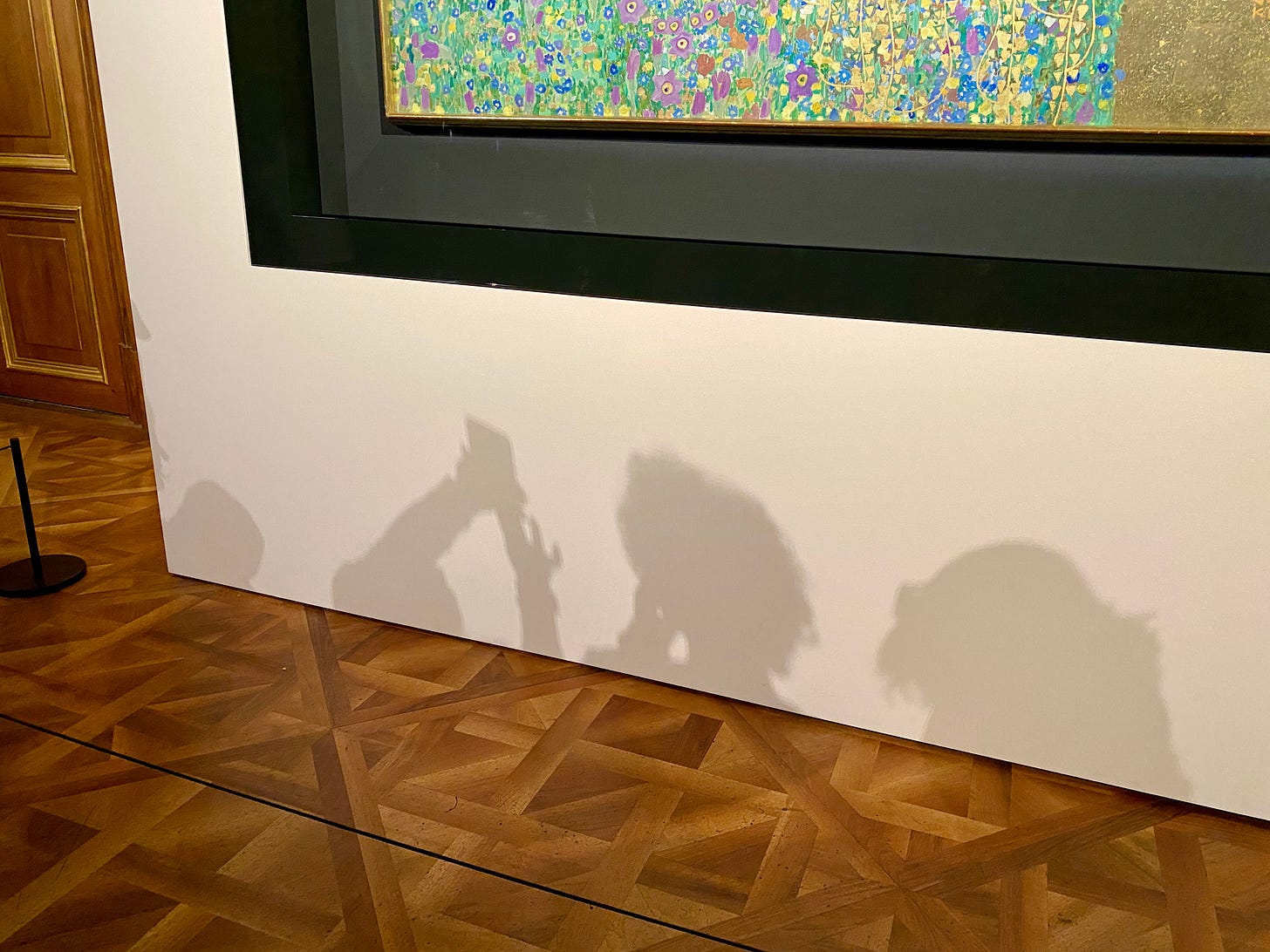
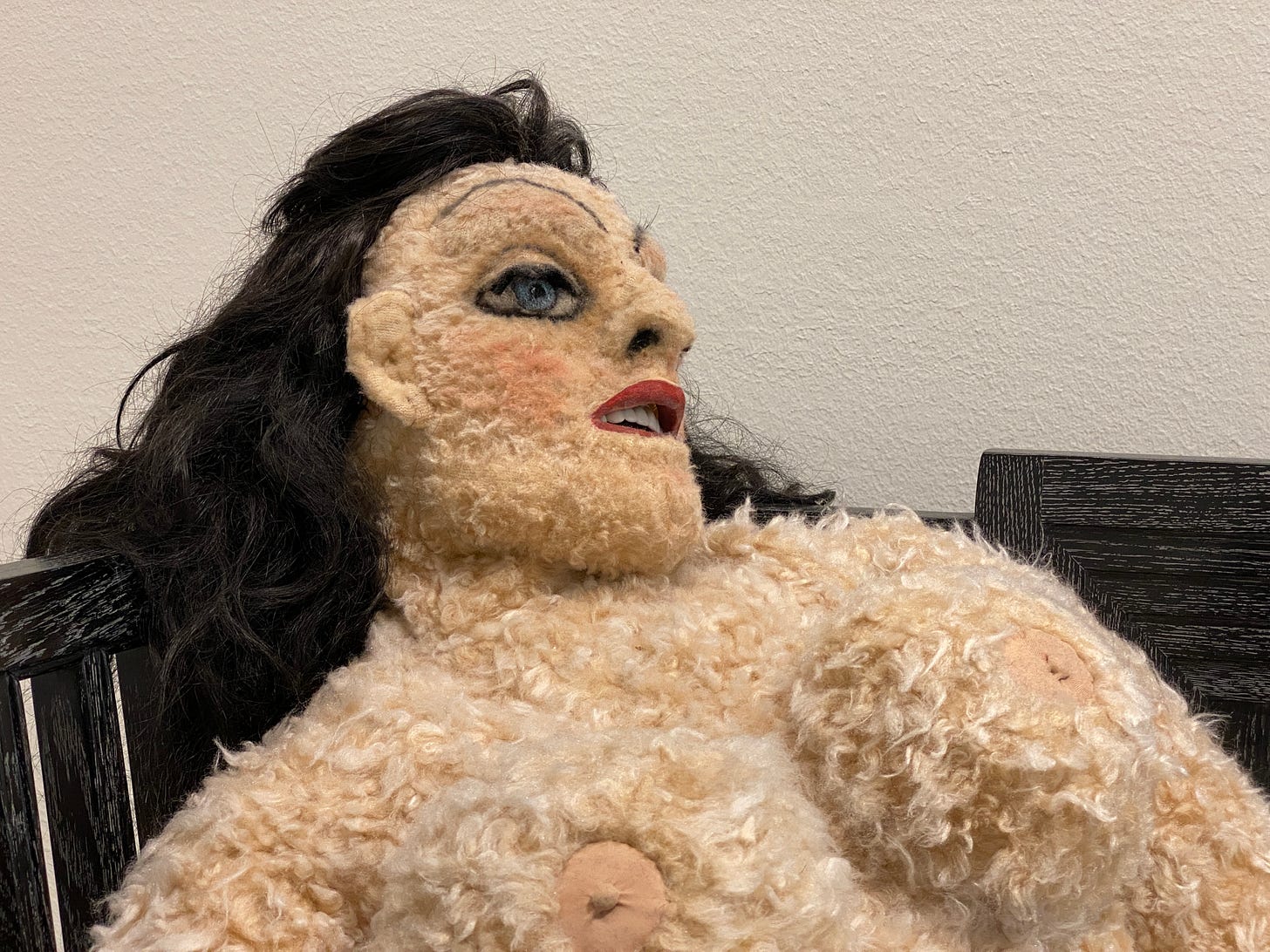




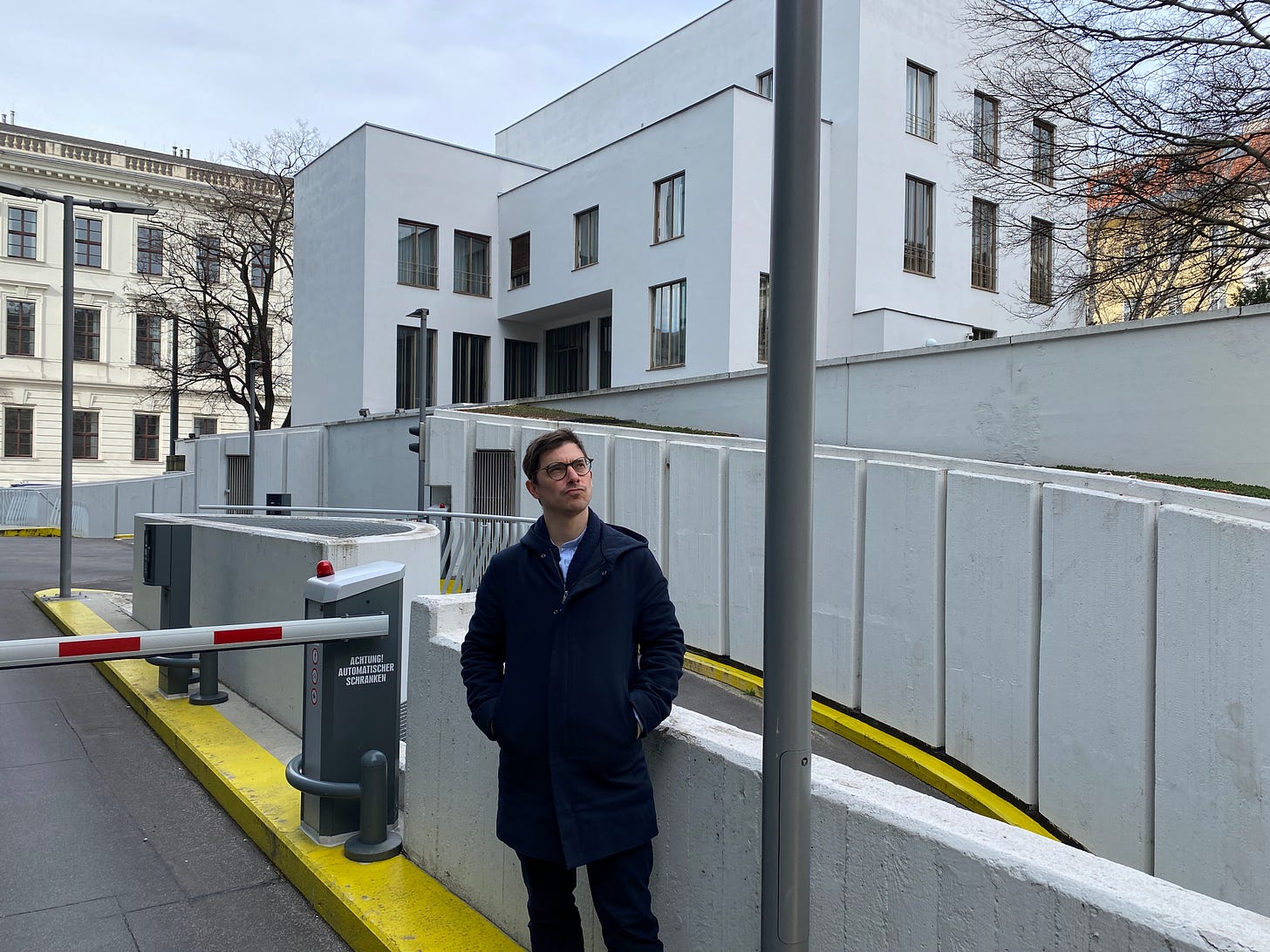
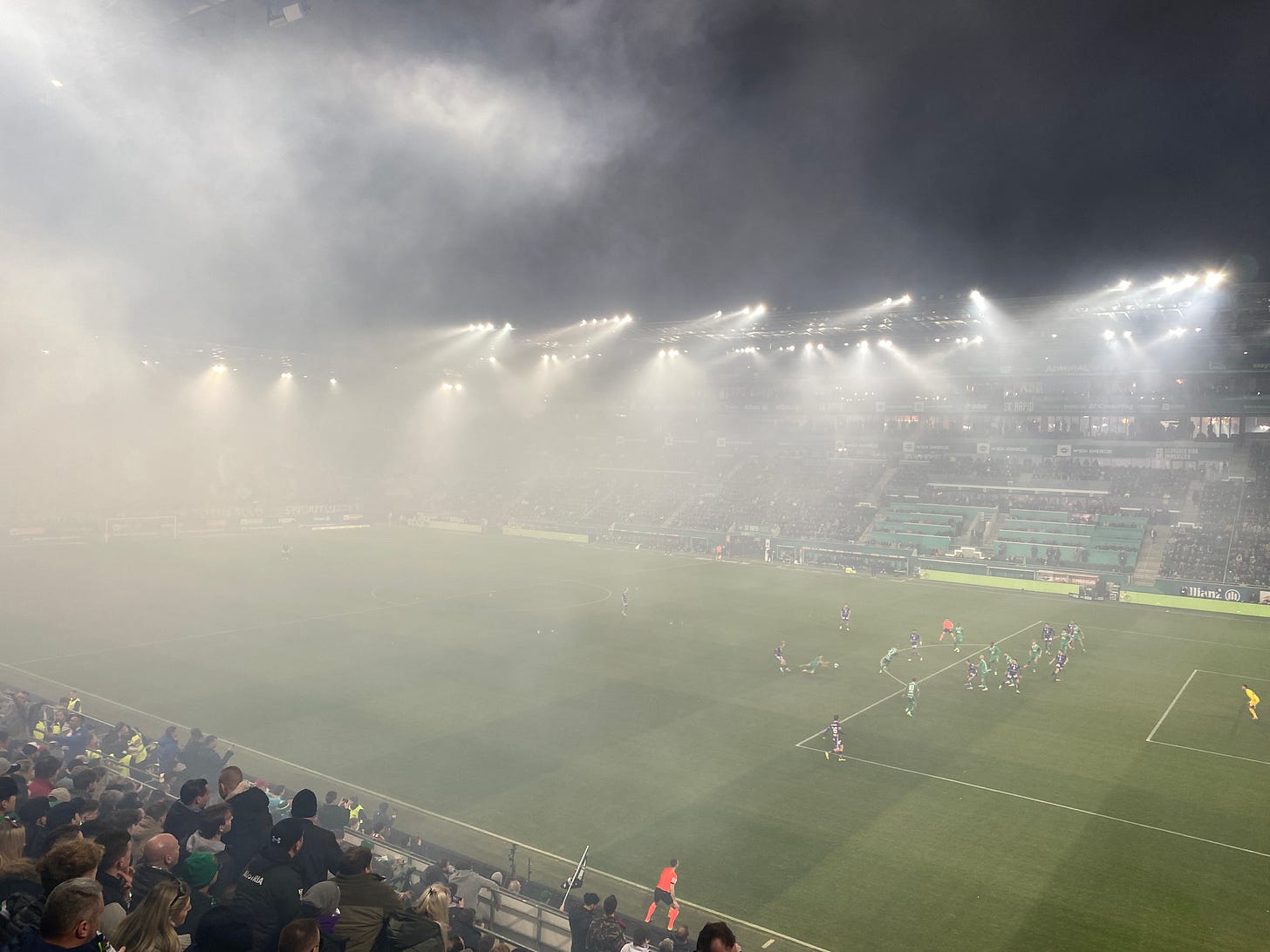

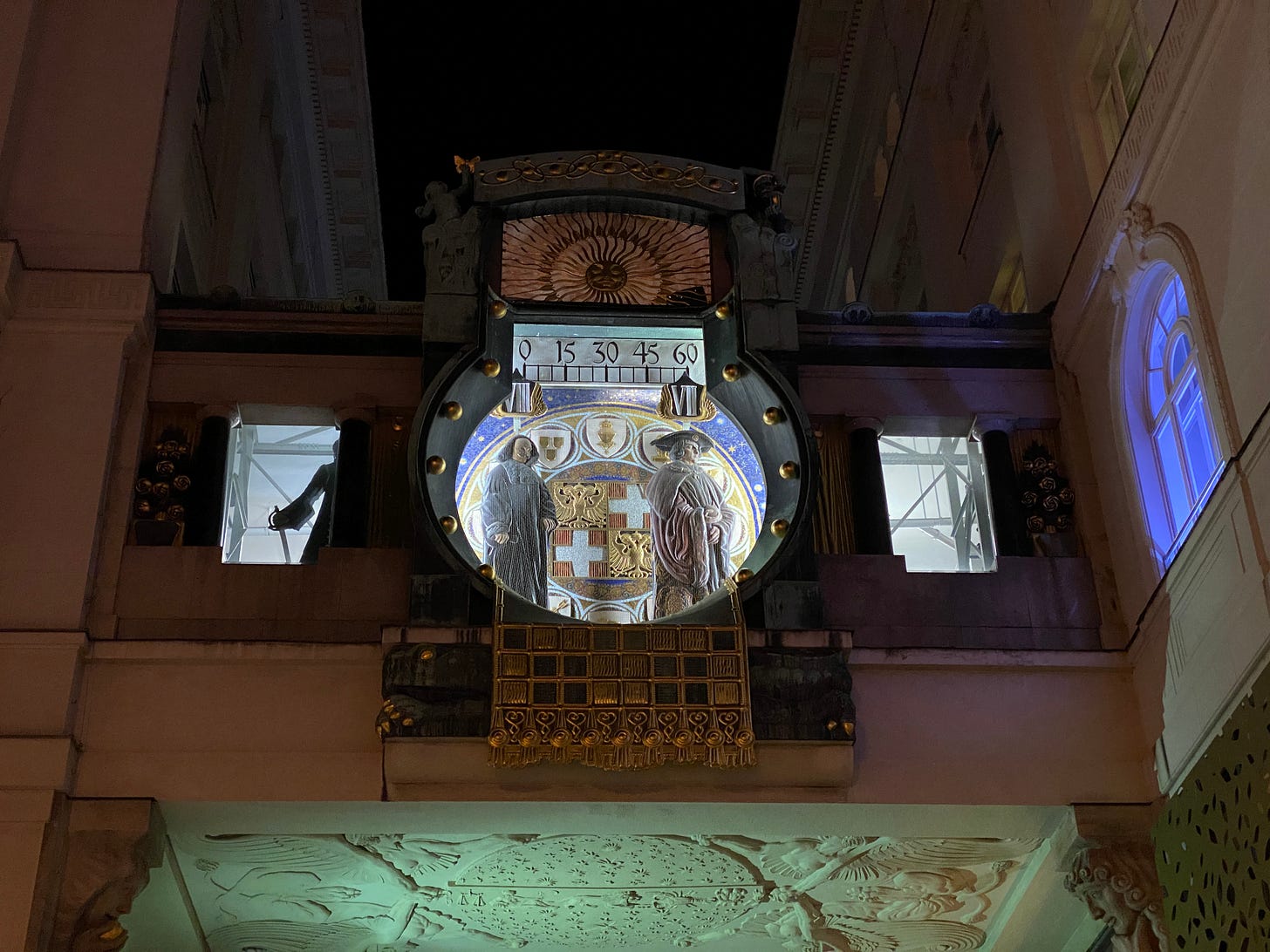
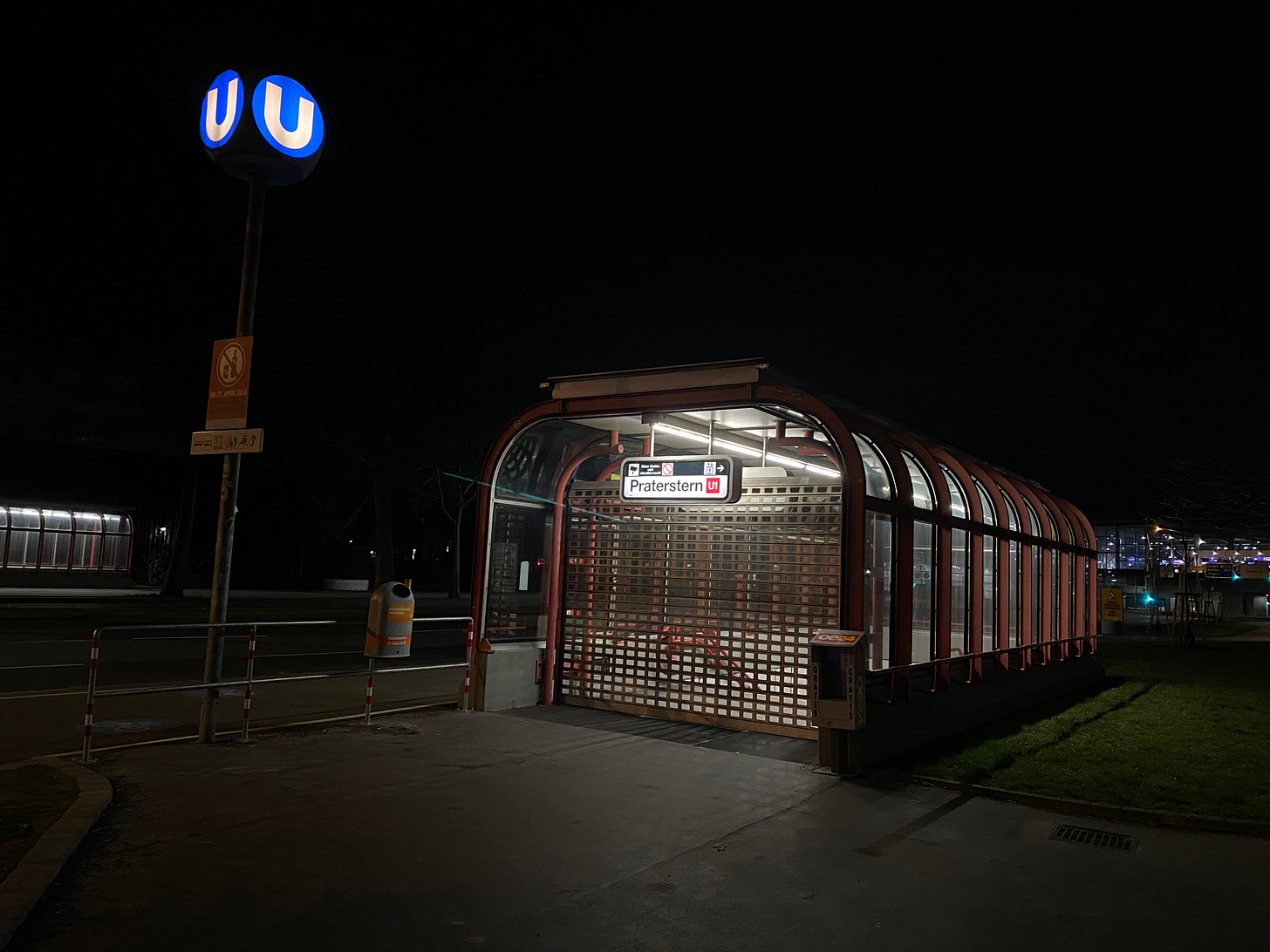

Thank you for your words. I like your sip / gulp phrase - very wise.
I visited Vienna about 15 years ago, loved it and would like to return soon. My forbears lived there and I felt a weird connection to the city.